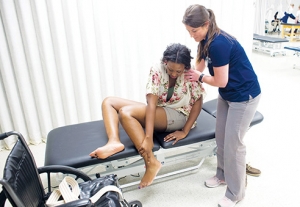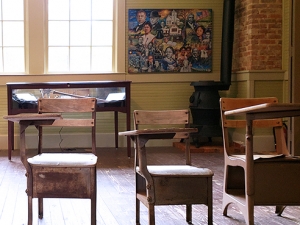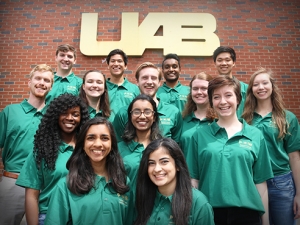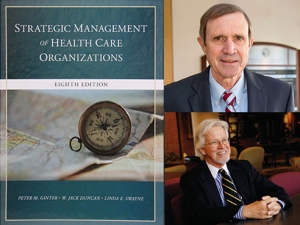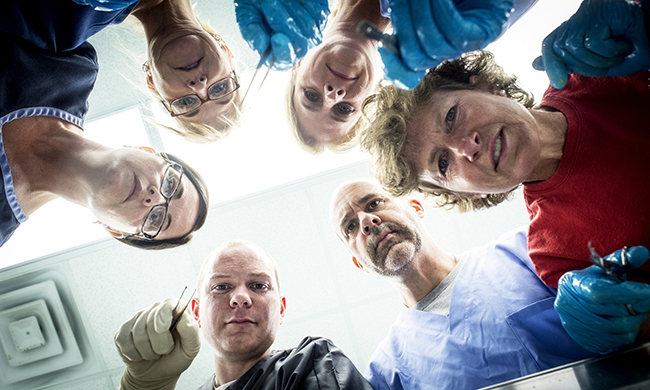 A new course gives anatomy teachers a rare opportunity to study the human body by cadaver dissection.
A new course gives anatomy teachers a rare opportunity to study the human body by cadaver dissection.
The Gross Anatomy for Teacher Education course, open to high-school and collegiate anatomy educators, includes lectures and complete dissection of a segment of the human anatomy. This year the course focused on the trunk, including the thorax, abdomen and pelvis.
“I started teaching undergraduate anatomy after finishing graduate school, but I had no real experience teaching anatomy and had certainly never seen — much less dissected — a human cadaver,” said William Brooks, Ph.D., director of the Gross Anatomy and Surgical Anatomy labs. “I realized that there were many other educators teaching anatomy who never had the chance to learn cadaveric anatomy. So, I wanted to provide this for them.”
The four-day course is organized through the Department of Cell, Developmental and Integrative Biology in conjunction with the Department of Medical Education. Participants attend lectures and spend time in the dissection lab. This year 29 graduate students, post-doctoral fellows, college and high-school faculty from Alabama, Mississippi, Tennessee and California attended.
“By opening this course to our graduate students and post-docs, we also help prepare our own trainees for careers in education,” Brooks said. “Completing a doctorate or post-doctoral fellowship with cadaveric anatomy training will help our graduates be more competitive in the job market.”
Sarah Graham, a UAB doctoral student in rehabilitation science, had the rare opportunity to take an advanced dissection course during her undergraduate career.
“It was a huge part of my early undergraduate education, but it’s been 10 years so I wanted a refresher,” Graham said. “I would love the opportunity to teach anatomy in the future, and I felt this course was a great opportunity.”
Carrie Whitehead, who teaches biology and anatomy/physiology at Hatley High School in Amory, Mississippi, said dissecting a cadaver is not an opportunity most teachers have and she was eager for the experience.
“When you have hands-on experience, it’s easier to explain certain things to your students in a way that they can understand. It’s one thing to look at a screen or a book and have it described to you, but it’s totally different when you get to do it yourself.”
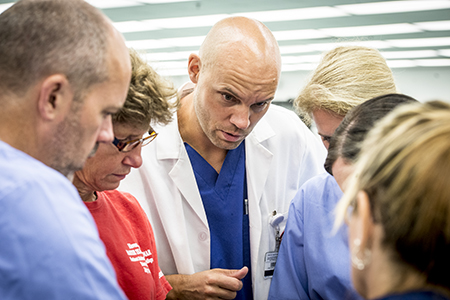 Graham thinks students will be more interested in the subject knowing their teacher has firsthand knowledge.
Graham thinks students will be more interested in the subject knowing their teacher has firsthand knowledge.
“This course is critical because it enables them to bring that real-world understanding of it to the classroom,” Graham said. “The students desperately need that perspective.”
This is the first time UAB has offered a course such as this. Brooks said the department plans to continue the course each summer. Each year the course will rotate its focus on different areas of human anatomy. The 2015 course will focus on the back and upper limbs.
“Our high-school and college anatomy educators begin the process of teaching future health-care providers human anatomy,” Brooks said. “UAB, as a leader in medical and health professions education, can support student education even at the high-school and college level by helping train high-school and college faculty.
“I hope these educators gain a better appreciation for the complexity of human anatomy and strategies for improving instruction at their home institutions.”
The course also supports UAB’s new Quality Enhancement Program — learning in a team environment — by including lectures on team-based learning, which Brooks said is part of the department’s pedagogy.
“At all levels of education there is a push for more active student engagement in the classroom and the development of critical-thinking skills among students,” Brooks said. “Team-based learning is a pedagogy that accomplishes each of these and is increasingly being used in anatomy education.”
More information about next year’s course, including a schedule, cost and registration, can be found online.



